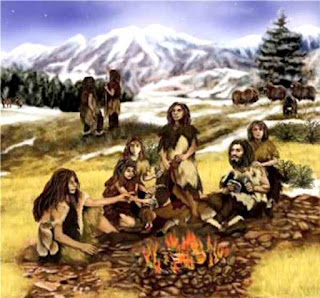Aboriginals practiced a system of animal farming called cultural burning. They set fires where scrub was low. Small animals could see the fires coming so could safely flee. The patchy habitat made hunting of the animals easy for hunters.
When lightning set large trees alight they could not breach the flatter areas. Aboriginals believed that continual burning sustained life for all. Early Australian governments continued with assimilation programs moving aboriginals to towns. Thus, the cool burns stopped.
Out of control wild fires destroy ecosystems. All burnable material is destroyed as the fires burn across hundreds of square kilometers. Occupation of the land by white people particularly with their monoculture has seen once quite fertile land turned to dust.
Aboriginals have always known the truth but paternal treatment of them silenced whole communities. They knew that without controlled burning kangaroos, dingoes and lizards would diminish in number in their old lands. Hunter gatherers have managed the environment in the past. We need to listen to them.
Keywords: fire, cultural, burning, people, aboriginal, martu, land, fires, food, australian,
Aboriginals have always known the truth but paternal treatment of them silenced whole communities. They knew that without controlled burning kangaroos, dingoes and lizards would diminish in number in their old lands. Hunter gatherers have managed the environment in the past. We need to listen to them.
1-21-1
Keywords: fire, cultural, burning, people, aboriginal, martu, land, fires, food, australian,
fire, burning, cultural, people, aboriginal, martu, land, fires, food, australian, bird, stories, places, view, bliege, place, country, australia, lightning, trips, experiences, animals, years, burns, small, drink, landscape, wildfires, sign, hunting, traditional, wonders, foods, indigenous, knowledge, life, burned, western, habitats, patchy, practice, australia’s, hunt, city, wondrous, world’s, newsletter, policy, privacy, media, twitter, community, popular, termite, burn, european, australians, lands, clear, hunters, time, smoke, swathes, firesticks, london, south, centuries, suppression, government, cool, prevent, consent, technology, social, devastating, wallaby's, threatened, answer, sand, birds, rocks, science, world, destroyed, suffering, protective, shade, lowcountry, enslaved, descendants, land’s, violence, proof, europeans, patches, species, relationship, maintain, perfect, creates, burrows, slowly, air, flame, sticks, areas, wide, destructive, urban, human, rate, disrupted, ecosystems, space, coast, colonialism, productive, continent’s, researchers, blazes, habitat, landscapes, populations, patchwork, people’s, order, evidence, dinner, forest, ecosystem, pushed, underbrush, prepared, medicinal,














